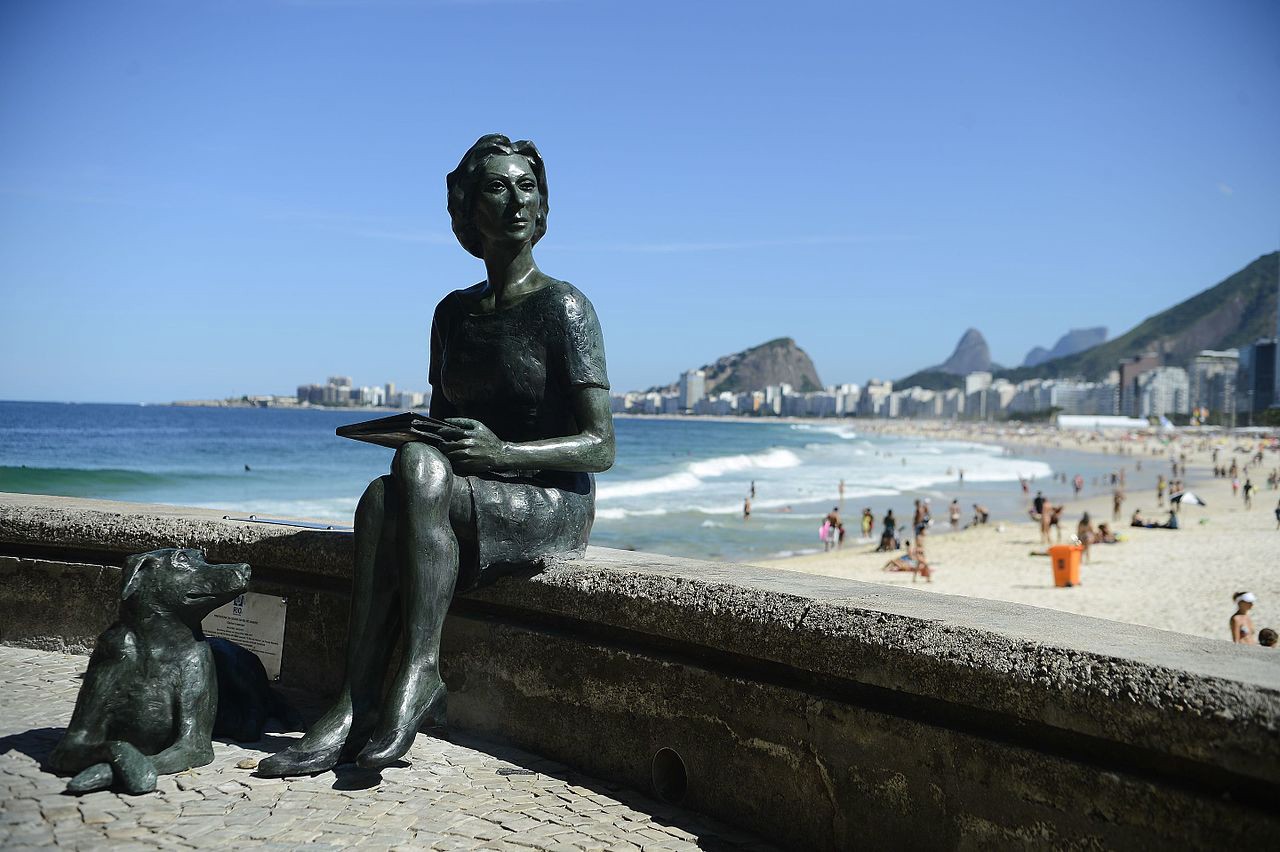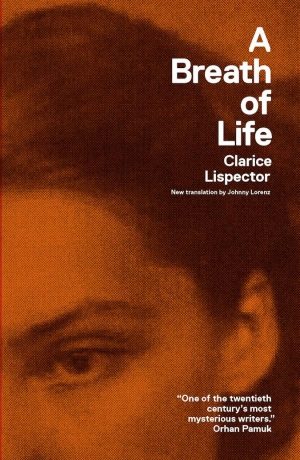essays
The Second Death of Clarice Lispector
After a fire destroyed all her work and nearly killed her, Lispector’s friend and assistant nursed together a novel out of fragments

Each month “Unfinished Business” will examine an unfinished work left behind by one of our greatest authors. What might have been genius, and what might have been better left locked in the drawer? How and why do we read these final words from our favorite writers — and what would they have to say about it? We’ll piece together the rumors and fragments and notes to find the real story.
The world nearly lost Clarice Lispector in 1966. After taking a sleeping pill on a September evening, she got into bed to smoke a cigarette and soon woke to find her apartment engulfed in fire. “In a panicked attempt to save her papers,” Benjamin Moser writes in his biography Why This World, “she attempted to put out the fire with her own hands.”
Lispector’s son eventually walked her over to a neighbor’s, but not before she had been badly burned from head to toe, her clothes melted onto her skin. Footprints of blood marked the carpet where she had stepped.
Had she died that night, Clarice Lispector would still have been remembered as one of Brazil’s most famous writers. At 46, she was the author of eight books, including Near to the Wild Heart and The Passion According to G.H. Her masterful, mystical stories and novels were like nobody else’s, and beyond this she was a fashionable and public figure, mesmerizing both on the page and in real life. One critic wrote that her work had “shifted the center of gravity around which the Brazilian novel had been revolving for about twenty years.”
Thankfully, Clarice Lispector did not die, not then. She was, however, hospitalized for three months with third-degree burns, experiencing immense and lasting pain. Her right hand, which she had used to write, was blackened and horribly bent. She kept family, friends, and neighbors nearby, and in time she pulled through — albeit to a life irrevocably altered.
She was hospitalized for three months with third-degree burns. Her right hand, which she had used to write, was blackened and horribly bent.
Lispector faced a grueling physical recovery, but the damage to her work was perhaps even greater. All her unfinished writing had been lost in the fire. She had been struggling for some time to follow the success of The Passion According to G.H. Now, after this trauma, Lispector began to despair, feeling increasingly isolated from society. “As time goes by, especially in the last few years,” she wrote, “I’ve lost the knack of being a person. I no longer know how one is supposed to be.”
Despite the setback, during this time she published two novels for children and wrote, in 1968, a novel called An Apprenticeship, which critics enjoyed, though she expressed dissatisfaction. Soon after, she announced that she would not write another book. When asked why in an interview she replied, “What a question! Because it hurts too much.”
But Lispector did keep fighting — not to get back to her old self, but forward into something else, which would eventually amount to a kind of second life of letters. She reinvented everything: her style, her methods, and even the very questions at the heart of her writing. In the years following, she would write dozens of new stories and several beautiful novels, including the masterpiece Água Viva and The Hour of the Star, which would carry her reputation beyond Brazil and into the waiting world.
Truman Capote’s Lost Novel Would Have Aired All His Dirtiest Laundry
To face these huge new challenges, Lispector got some help. She began to see a psychiatrist, Jacob Azulay, five days a week, an hour a day — for the next six years. Sometimes, he recalled, she would write sentences and fragments in his office.
“I am nothing,” she wrote, once, according to Azulay. “I feel like those insects who shed their skin. Now I lost the skin. The name of that skin is Clarice Lispector.”
She also hired an assistant named Olga Borelli, who, according to Moser, “would become a key figure in the last years of Clarice’s life and whose tireless dedication and intellectual affinity facilitated the creation of Clarice’s great final works.” Borelli, a former nun, had been an ardent fan of Lispector’s writing, and after seeing her on a television program one night, decided to call her under the auspices of fundraising for a charity. They spoke on the phone and two weeks later, the women met.
Lispector gave her a typed letter declaring their friendship:
I have found a new friend. Which is too bad for you. I am an insecure, indecisive, directionless, rudderless person: the truth is I don’t know what to do with myself. I am a very fearful person. […] Do you still want to be my friend despite all that?
She did. Borelli henceforth dedicated her life to the remainder of Lispector’s. She became a part of Lispector’s day-to-day world. She cared for her, talked with her, comforted her, and played a singular hand in the construction of her late works, editing and arranging them from disparate fragments, including until her very last — A Breath of Life, published in 1978, just a year after Lispector’s death from cancer.
A Breath of Life (Un Soplo de Vida), which was translated for New Directions in 2012 by Johnny Lorentz, is primarily a conversation between two characters: an unnamed male Author, and Angela, the character that the Author is creating. “The title,” according to Moser, “refers to the creation, mystical or ‘Frankensteinian,’ of one being by another.”
Over the book’s 160 pages, Angela and her Author discuss the connections between Creator and Created and what this breathing of life entails — the creation of a character, the process of filling its days and years with pain and joy. There is a strong preoccupation with knowing that creation means, inevitably, death. Some critics have noticed that the voices of the two characters often switch and merge together. The Author has a tendency to override Angela’s voice, who in turn sometimes influences her creator’s mannerisms in spooky ways.
Publisher’s Weekly called it a “schizoid duet” (in a nice way) when the book was translated into English — the Author and Angela being two sides of Clarice Lispector, struggling both with the challenge of creation and with her own imminent death. Throughout the book, the Author, and Clarice, struggle with having to come to an end, meaning that Angela will come to an end. “Do I kill her? Does she kill herself?” he asks. Angela remarks later, “At the hour of my death — what do I do? Teach me how to die. I don’t know.”
But in some sense, the novel as we read it is actually a “schizoid trio,” for between the arguments of Angela and the Author, who together may make up Clarice, there is also Olga Borelli — the woman who transcribed, edited, typed, retyped, and reedited hundreds of fragments during Lispector’s lifetime, and, after her death from ovarian cancer, ultimately organized those fragments into their final form.
Olga Borelli transcribed, edited, typed, retyped, and reedited hundreds of fragments during Lispector’s lifetime, and, after her death from ovarian cancer, ultimately organized those fragments into their final form.
According to Benjamin Moser, before meeting Borelli, Lispector had never permitted her literary work to be edited by anyone. Olga Borelli would be more than just an editor, however; she was a silent collaborator. Possessing “a sensitive, well-educated reader with a refined sense of language,” she would later write her own memoir of her time with Lispector. Organizing and editing was exhausting for Lispector at this stage, and she was prepared to fully abandon a several-hundred-page mess she was calling Loud Object. Instead, with Olga’s help, they shed its skin and exposed a 96-page masterpiece, Água Viva.
Borelli’s contribution to A Breath of Life was even more crucial, since the book was still in fragments upon Lispector’s death. In a half-page introduction to the book, Borelli briefly notes her role in finishing Lispector’s unfinished “definitive book,” which was, “in the words of Clarice, ‘written in agony,’ for it was born from a painful impulse she was unable to contain.” Reflecting on her eight years of working closely with Lispector, Borelli remarked, “I wrote down her thoughts, typed her manuscripts and most of all shared in her moments of inspiration.”
Borelli described her method as “breathing together” and likened the experience to building a puzzle, in this case out of sometimes scavenged fragments of writing: “on the back of a check, a piece of paper, a napkin […] some even smell of her lipstick. She would wipe her lips and then stick it in her purse.” The fragmentary nature of Lispector’s writing and Olga’s editing is part of the book’s atmosphere. In her introduction, Lispector wrote, “This I suppose will be a book made apparently out of shards of a book. […] My life is made of fragments and that’s how it is for Angela.”
Moser notes that A Breath of Life was “not only published but also, to some extent, written after Clarice’s death” by Borelli, “breathing together” with the memory of Clarice. Thus the book, Moser argues, achieves its perfection “precisely by its incompletion and imperfection.”
After this final book’s publication, Olga Borelli confessed to having left out one crucial line of the Author’s: “I asked God to give Angela a cancer that she can’t get rid of.” This was, she said, out of sensitivity to Lispector’s family. Lispector had told several people throughout her life, including Azulay, her psychiatrist, that she knew she would someday die of “a nasty cancer.” When Lispector was hospitalized in 1977, just a few days after publishing The Hour of the Star (which Olga also edited), doctors soon diagnosed her with terminal ovarian cancer—although she was never told that this was what she was dying of.
Lispector again spent three months in the hospital, but this time she did not leave. Olga Borelli passed the time with her, taking dictation right up to the day of the hemorrhage that would end Clarice’s life.
In the letter that Lispector wrote to Borelli at their first meeting, she asked if, despite all her fears and problems, Olga would want to be her friend. Just following that, she wrote:
If you do, don’t say I didn’t warn you. I don’t have qualities, only fragilities. But sometimes… sometimes I have hope. The passage from life to death frightens me: it’s like passing from hate which has an objective and is limited, to love which is limitless. When I die (as a matter of speaking) I hope you will be near. You seemed to me to be a person of enormous sensitivity, but strong.
Clarice Lispector died, again, almost eleven years after the fire that had changed her life, and her art, forever. Olga Borelli was there, holding her hands as it happened.
And then, she got to work.









